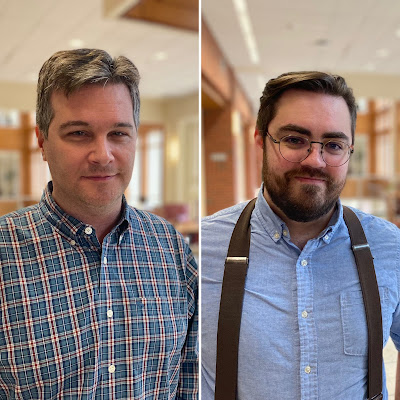Quake testing planned at Miami, OK

University of Oklahoma researchers Muralee Muraleetharan, left, and Charbel Khoury discuss an earthquake study in Miami, Okla. Gary Crow, for The Oklahoman
BY SHEILA STOGSDILL
Published: August 19, 2010
MIAMI, OK — Pipes that represent bridge pilings will be "shaken" next month in northeast Oklahoma during an earthquake simulation project designed to improve bridge building in quake-prone areas.
University of Oklahoma researchers Muralee Muraleetharan, left, and Charbel Khoury discuss an earthquake study in Miami, Okla. Gary Crow, for The Oklahoman
Ottawa County is not prone to earthquakes, but the soft clay soil found there is similar to the soil in San Francisco — and in areas of Missouri and Arkansas affected by the New Madrid fault line — said K.K. "Muralee" Muraleetharan, a University of Oklahoma researcher who is leading the five-university study.
A "hydraulic actuator" will be used to shake giant pipes buried near the Neosho River Bridge on the south side of Miami, Muraleetharan said. Sometimes referred to as a portable shaker, the 500-pound, 6-foot-long piece of equipment will simulate earthquake motion, he said.
Miami residents will not feel any vibrations during the hourlong test scheduled for mid-September, he said.
"Whatever we learn in Miami can be used in San Francisco and New Madrid," Muraleetharan said of the four-year, $1.2 million study funded by a National Science Foundation grant.
The project got under way Monday with preparations for a crane to push two steel pipes, about a foot in diameter each, into the soil near the base of the bridge. The pipes, called pile foundations, are used to support bridges and buildings that cannot be supported by soft soils, he said.
Miami City Manager Huey Long said there will be no danger to the bridge.
"There is no danger of hurting the bridge or hurting the roads," he said.
Both pipes with be submerged 21 feet into the earth, Muraleetharan said, one into a clay-cement mixture soil and the other in regular clay soil, to be compared.
Researchers are developing a technique called "cement deep-soil mixing" which strengthens clay soil to improve the performance of the bridge pilings, he said. The study will help determine how much cement should be added to the soil.
Iowa State University, San Jose State University, Clemson University, UCLA, Grand River Dam Authority, the Oklahoma Department of Transportation, the city of Miami, Earth Mechanics Inc. and Advanced GEOSolutions Inc. are identified by a sign at the site as being partners in the study.
Major earthquakes on the New Madrid fault were felt across thousands of square miles in 1811 and 1812.
There is a 7 to 10 percent chance in the next 50 years that a major earthquake could occur like those in 1811-1812, which likely had magnitudes of between 7.5 and 8.0, according to the U.S. Geological Survey.
There is a 25 to 40 percent chance of a magnitude 6.0 or greater earthquake, it said.


